1.4E: Exercises
- Last updated
- Jun 6, 2019
- Save as PDF
- Page ID
- 20543
( \newcommand{\kernel}{\mathrm{null}\,}\)
1.4: Exercises
For the following exercises, use the horizontal line test to determine whether each of the given graphs is one-to-one.
183)
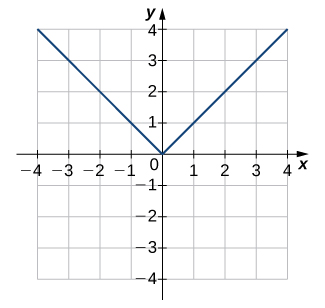
- Answer:
- Not one-to-one
184)
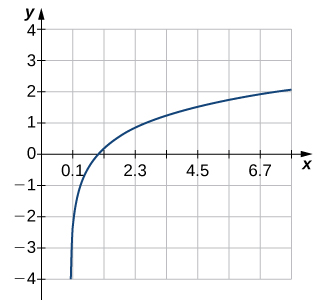
185)
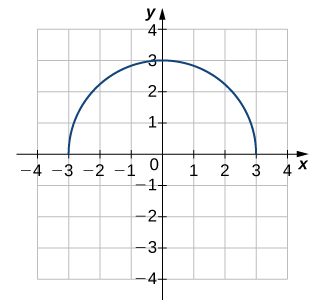
- Answer:
- Not one-to-one
186)
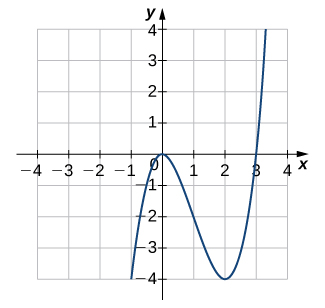
187)
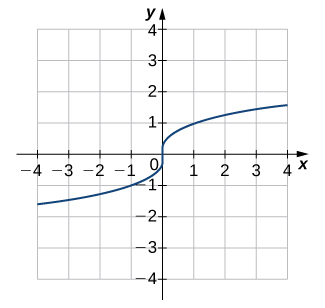
- Answer:
- One-to-one
188)
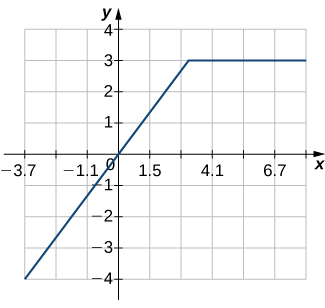
For the following exercises, a. find the inverse function, and b. find the domain and range of the inverse function.
189) f(x)=x2−4,x≥0
- Answer:
- a. f−1(x)=√x+4
b. Domain : x≥−4,range:y≥0
190) f(x)=3√x−4
191) f(x)=3+1
- Answer:
- a. f−1(x)=3x−1
b. Domain: all real numbers, range: all real numbers
192) f(x)=(x−1)2,x≤1
193) f(x)=√x−1
- Answer:
- a. f−1(x)=x2+1
b. Domain: x≥0, range: y≥1
194) f(x)=1x+2
For the following exercises, use the graph of f to sketch the graph of its inverse function.
195)
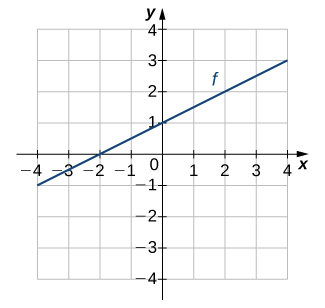
- Answer:
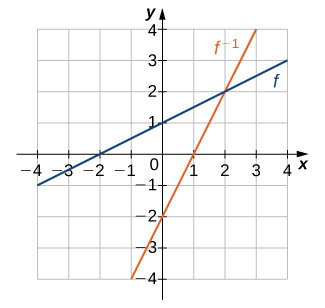
196)
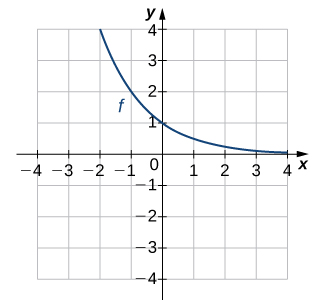
197)
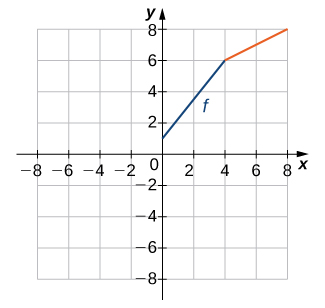
- Answer:
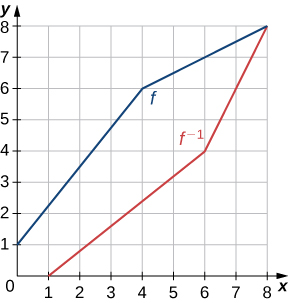
198)
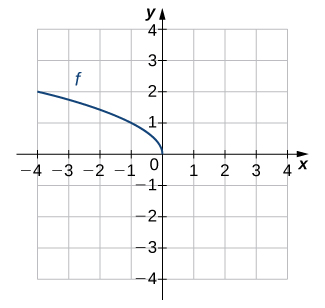
For the following exercises, use composition to determine which pairs of functions are inverses.
199) f(x)=8x,g(x)=x8
- Answer:
- These are inverses.
200) f(x)=8x+3,g(x)=x−38
201) f(x)=5x−7,g(x)=x+57
- Answer:
- These are not inverses.
202) f(x)=23x+2,g(x)=32x+3
203) f(x)=1x−1,x≠1,g(x)=1x+1,x≠0
- Answer:
- These are inverses.
204) f(x)=x3+1,g(x)=(x−1)1/3
205) f(x)=x2+2x+1,x≥−1,g(x)=−1+√x,x≥0
- Answer:
- These are inverses.
206) f(x)=√4−x2,0≤x≤2,g(x)=√4−x2,0≤x≤2
For the following exercises, evaluate the functions. Give the exact value. Do these without a calculator.
207) tan−1(√33)
- Answer:
- π6
208) cos−1(−√22)
209) cot−1(1)
- Answer:
- π4
210) sin−1(−1)
211) cos−1(√32)
- Answer:
- π6
212) cos(tan−1(√3))
213) sin(cos−1(√22))
- Answer:
- √22
214) sin−1(sin(π3))
215) tan−1(tan(−π6))
- Answer:
- −π6
------------------------------------------------------------------------------------
216) The function C=T(F)=(5/9)(F−32) converts degrees Fahrenheit to degrees Celsius.
a) Find the inverse function F=T−1(C)
b) What is the inverse function used for?
217) [T] The velocity V (in centimeters per second) of blood in an artery at a distance x cm from the center of the artery can be modeled by the function V=f(x)=500(0.04−x2) for 0≤x≤0.2.
a) Find x=f−1(V).
b) Interpret what the inverse function is used for.
c) Find the distance from the center of an artery with a velocity of 15 cm/sec, 10 cm/sec, and 5 cm/sec.
- Answer:
- a. x=f−1(V)=\sqrt{0.04−\frac{V}{500}}\)
b. The inverse function determines the distance from the center of the artery at which blood is flowing with velocity V.
c. 0.1 cm; 0.14 cm; 0.17 cm
218) A function that converts dress sizes in the United States to those in Europe is given by D(x)=2x+24.
a) Find the European dress sizes that correspond to sizes 6, 8, 10, and 12 in the United States.
b) Find the function that converts European dress sizes to U.S. dress sizes.
c) Use part b. to find the dress sizes in the United States that correspond to 46, 52, 62, and 70.
219) [T] The cost to remove a toxin from a lake is modeled by the function C(p)=75p/(85−p), where C is the cost (in thousands of dollars) and p is the amount of toxin in a small lake (measured in parts per billion [ppb]). This model is valid only when the amount of toxin is less than 85 ppb.
a) Find the cost to remove 25 ppb, 40 ppb, and 50 ppb of the toxin from the lake.
b) Find the inverse function. c. Use part b. to determine how much of the toxin is removed for $50,000.
- Answer:
- a. $31,250, $66,667, $107,143
b. (p=85CC+75)
c. 34 ppb
220) [T] A race car is accelerating at a velocity given by v(t)=254t+54,
where v is the velocity (in feet per second) at time t.
a) Find the velocity of the car at 10 sec.
b) Find the inverse function.
c) Use part b. to determine how long it takes for the car to reach a speed of 150 ft/sec.
221) [T] An airplane’s Mach number M is the ratio of its speed to the speed of sound. When a plane is flying at a constant altitude, then its Mach angle is given by μ=2sin−1(1M).
Find the Mach angle (to the nearest degree) for the following Mach numbers.
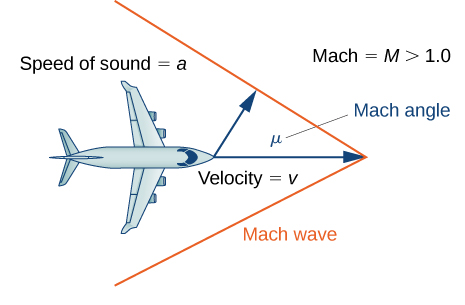
a. μ=1.4
b. μ=2.8
c. μ=4.3
- Answer:
- a. 92°
b. 42°
c. 27°
222) [T] Using μ=2sin−1(1M), find the Mach number M for the following angles.
a. μ=π6
b. μ=2π7
c. μ=3π8
223) [T] The temperature (in degrees Celsius) of a city in the northern United States can be modeled by the function
T(x)=5+18sin[π6(x−4.6)],
where x is time in months and x=1.00 corresponds to January 1. Determine the month and day when the temperature is 21°C.
- Answer:
- x≈6.69,8.51; so, the temperature occurs on June 21 and August 15
224) [T] The depth (in feet) of water at a dock changes with the rise and fall of tides. It is modeled by the function D(t)=5sin(π6t−7π6)+8, where t is the number of hours after midnight. Determine the first time after midnight when the depth is 11.75 ft.
225) [T] An object moving in simple harmonic motion is modeled by the function s(t)=−6cos(πt2), where s is measured in inches and t is measured in seconds. Determine the first time when the distance moved is 4.5 ft.
- Answer:
- 1.5 sec
226) [T] A local art gallery has a portrait 3 ft in height that is hung 2.5 ft above the eye level of an average person. The viewing angle θ can be modeled by the function θ=tan−15.5x−tan−12.5x, where x is the distance (in feet) from the portrait. Find the viewing angle when a person is 4 ft from the portrait.
227) [T] Use a calculator to evaluate tan−1(tan(2.1)) and cos−1(cos(2.1)). Explain the results of each.
- Answer:
- tan−1(tan(2.1))≈−1.0416; the expression does not equal 2.1 since 2.1>1.57≈π2—in other words, it is not in the restricted domain of tanx. 2.1 is in Quadrant II.
cos−1(cos(2.1))=2.1, since 2.1 is in the restricted domain of cosx.
228) [T] Use a calculator to evaluate sin(sin−1(−2)) and tan(tan−1(−2)). Explain the results of each.

